The art of making Kundan Jewellery found great patronage during the Mughal Era and some of the world’s most mesmerizing pieces of jewellery were created in those times. India was often called the “Golden Bird” thanks to the availability of the precious metal as well a
s its mystical usage in the creation of fascinating ornaments.
Traditional kundan jewellery has stones encrusted on one side and colourful and intricate meenakari on the reverse. The beauty of kundan work lies in the precise setting of stones into kundan and the overall look of the ornament.
| Kundan karigari, is carried by a group of craftsmen, each carrying out a specific task.
The Chiterias make the basic design & a gold stencil is created. Then he outlines the pattern on the gold surface and burnishes it, to make it stand out. The Ghaarias are responsible for engraving and making holes. Champleve – is a technique used by the engraver to lower those areas of the metal that will take the enamel by carving them out. These lowered surfaces are hatched with fine parallel lines to enable thorough fusion between colour and metal, to add to the visual delight as the hatchings enhance the play of light over the transparent colours. Meenakari or enameling is done by the Enameller. He fills in the enamel Colours in the lowered surfaces, thereby evening the surface and fusing it to the gold with repeated firings. Since the enamels are of varying hardness and thus require different temperatures for fusing, they must be fired separately – that from hardest highest temperature to softest lowest temperature. Cooling is as important as heating: a flow at this stage could crack the enamel or render it undesirably opaque. “The purer the gold, the richer the colour,” goes an old saying, And finally, the goldsmith takes care of the kundan or gold. The jadiyas or stone setters, set stones such as jade, rock crystal, agate, garnet, emerald, topaz, amethyst, and spinel into kundan. Kundan is a method of gem setting, consisting of inserting a gold/silver foil between the stones and its mount. The purest, softest gold/silver is hammered into very fine sheets and literally mounded around the stones to encase them and hold them in place. Light strikes the precious stones only from above dulling their shine. So, to provide depth and refraction a piece of gold/silver foil is placed under the stone making it glow. Intricately designed earrings, necklaces and pendants of all shapes and sizes are made with kundan work. |
The Historical significance associated with this jewellery, that it was once worn by only Kings and Queens, is what makes it so attractive. Kundan jewellery, like wine only gets better with time. Inspite the trend for fusion and Indo Western jewellery in our culture, on occasions like Wedding and Festivals, Indian women prefer the traditional and the Royal Ethnic look – Kundan it is!



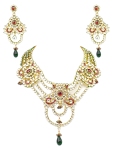
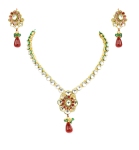
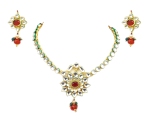
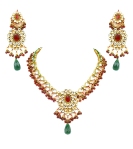
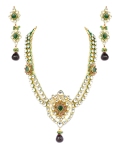
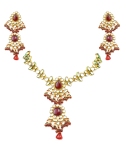
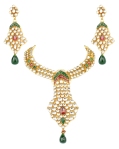
These pics are include collection of wedding jewellery Designs.Thank you for sharing this.
LikeLike
Thanks for the points
LikeLike
Hi. I love to visit this blog page. I get to know what really wearing Kundan jewellery is all about. After reading the content here, i am more in love with my Kundan earrings, and I know exactly how to pair it up with my accessories. The content is so informative, and these interesting blogs never allows boredom to capture you. The tips and info shared on this page, is worth spending your time, referring them.
visit : http://www.goldencrush.com
LikeLike
Keep visiting it. A new post is going to be updated in 30 minutes. Follow it! 🙂
LikeLike